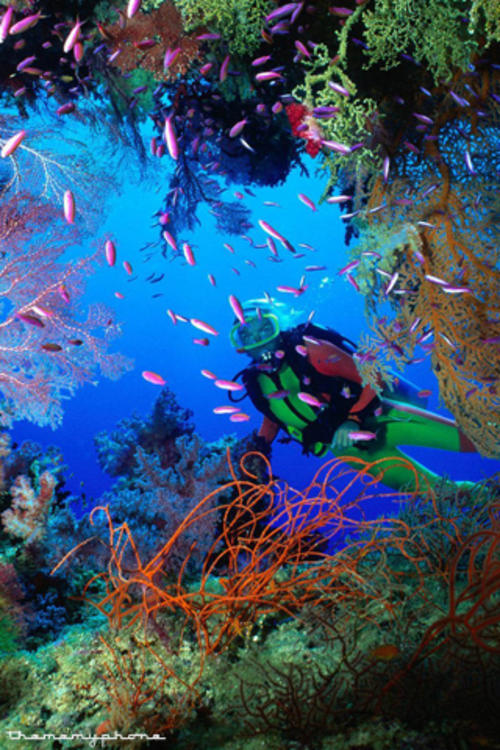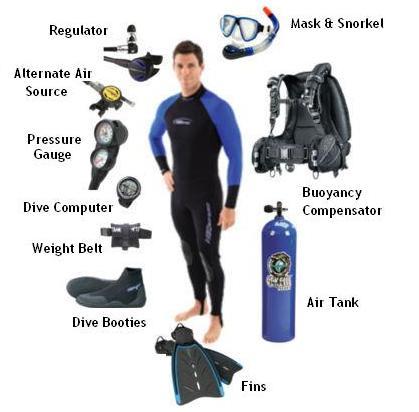Scuba Diving
An air tank and regulator is a necessity to help you breathe under water. Air tanks come pretty standard and are simply a method of storing sufficient air for you to remain under water for an extended time.
|  |
 | Because it¿s difficult to talk with your mouth full of regulator, communication is primarily by hand signals, adapted for easy use underwater. Basic signals include thumbs up or down for ascending or descending and hands across the neck to indicate trouble with breathing. At Sodwana Bay, also a 5-star IDC, you can dive with the whale sharks on the Northern Zululand Elephant Coast. |